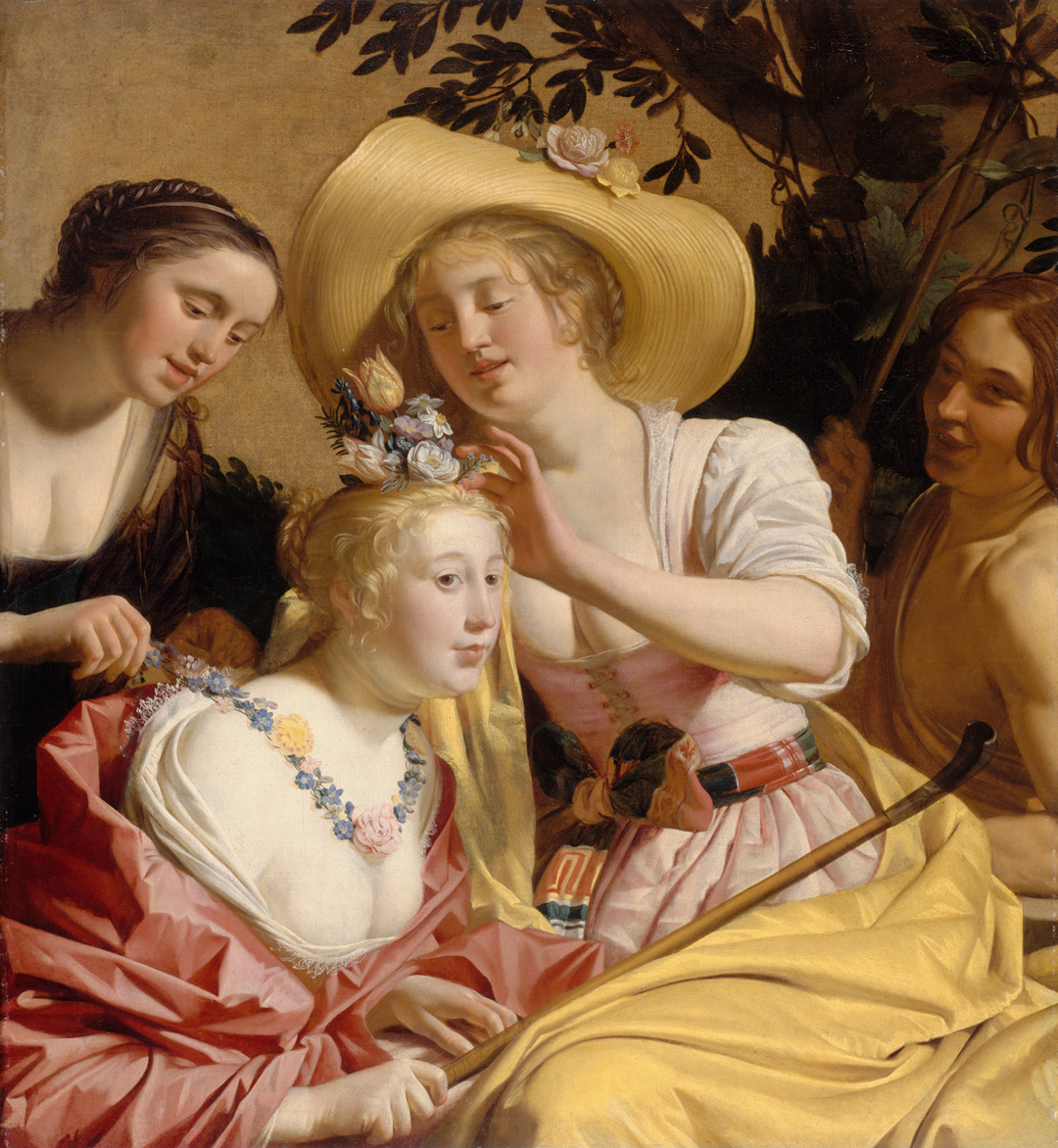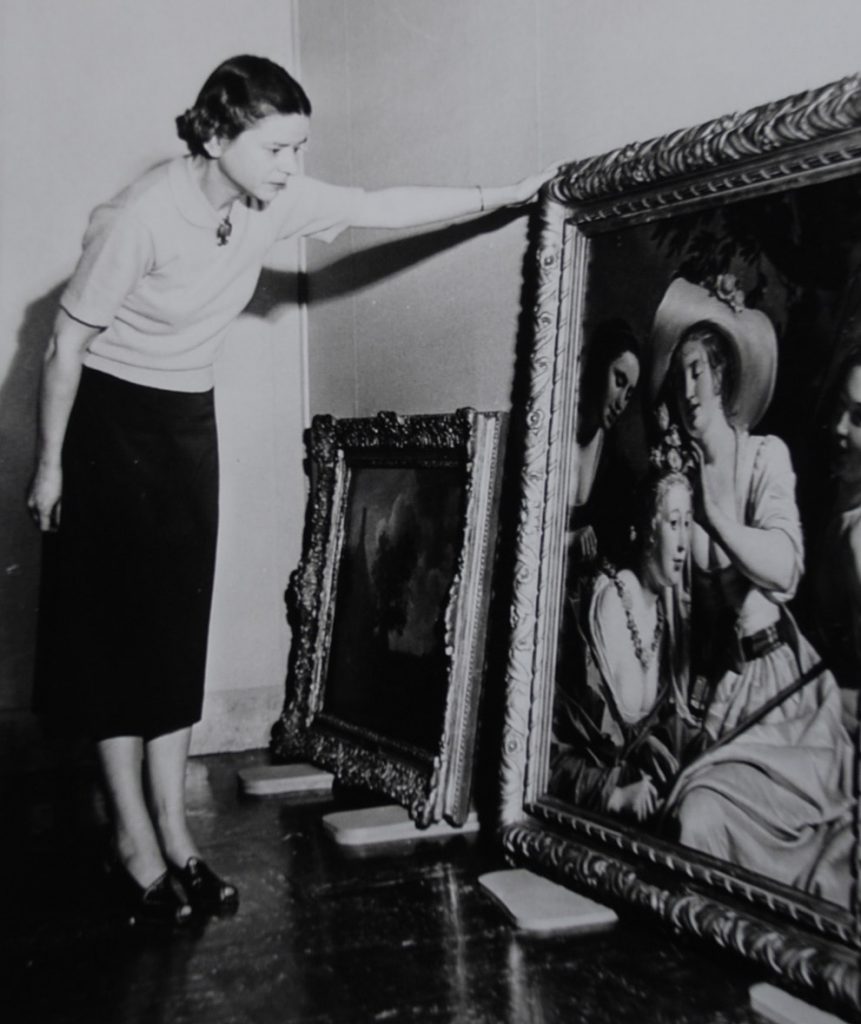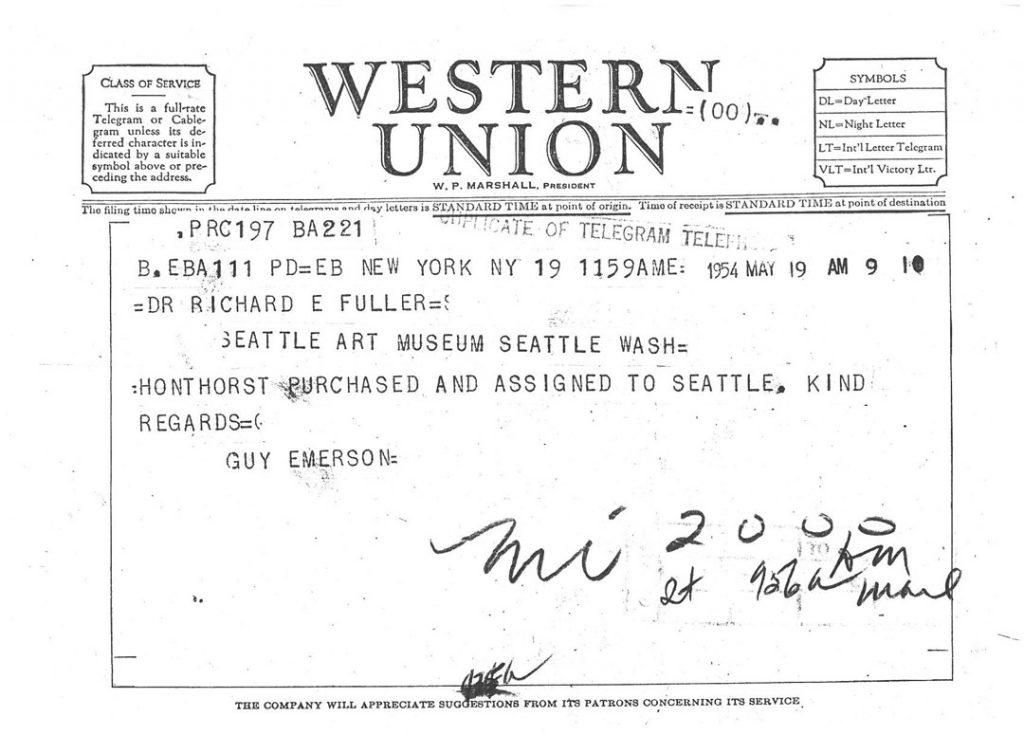Object of the Week: A Shepherdess Adorned with Flowers

In an old photo from SAM’s archive, we see the inimitable Dottie Malone examining the museum’s painting by Dutch master Gerrit van Honthorst before it was exhibited in the two newly finished Kress galleries in October, 1954. There’s something of straitlaced concern visible on her face; her left arm fully outstretched, she seems to be keeping the painting at a safe distance. She’s at least not visibly impressed. I wonder if the low-cut blouses of the three shepherdess figures, and the abundant flesh laid bare, didn’t quite meet with her approval. If she were scandalized in the ‘50s, she would have been far from the last. The painting is coming up on 400 years old and can still sometimes draw a blush or a stern look of disapproval. What an accomplishment!

Besides being sexy, Honthorst’s A Shepherdess Adorned with Flowers is masterfully painted, rosy pinks and mellifluous yellows playing against the porcelain skin of its heroines. Theatrical light, a reminder of Caravaggio’s lasting influence on Honthorst, captures the figures as actors in a stage play—and in a sense, that’s what they are. Painted to accommodate courtly and aristocratic taste, pastoral scenes like this one offered a momentary escape from the pressures and strictures of the early modern world. Blatantly artificial, they conjured an idealized world of love and leisure, reflecting nostalgic desires for intimacy with nature and human desires for release from the morals and rituals that governed daily life. Responding to a world that disallowed dalliances, Honthorst imagines a more primal world that blithely sanctions them. Given the look of availability about the main figure, few would be surprised to hear that literary and visual traditions of the time linked the shepherdess and the sex worker.
Officially acquired in 1961, SAM had the painting seven years earlier than that. On May 12, 1954, Kress Foundation art director Guy Emerson wrote to Dr. Fuller with updates on the Foundation’s recent activities, including a mention of our fine Honthorst painting: “I am enclosing a photograph of a painting by our old friend Honthorst which we all saw at Knoedler’s last week and like very much. Mr. Kress thought that it ought to go to the National Gallery and Walker and Modestini felt that it was the best Honthorst they had seen in America. It is gay and fresh and full of color and life.” In short order, the Kress Foundation had acquired the painting with Dr. Fuller and SAM in mind.

The Honthorst arrived in a batch of artworks from the Kress Foundation that also included Bernardo Strozzi’s Hagar and the Angel, Veronese’s Venus and Adonis, Abraham van Beyeren’s Banquet Still Life, and Massimiliano Soldani’s bronze The Lamentation over the Dead Christ. October 15, 1954 marked the first display of the Honthorst in Seattle, the grand opening of SAM’s Kress galleries, and the confirmation of an important relationship between the museum and the foundation.
–Jeffrey Carlson, SAM Collections Coordinator